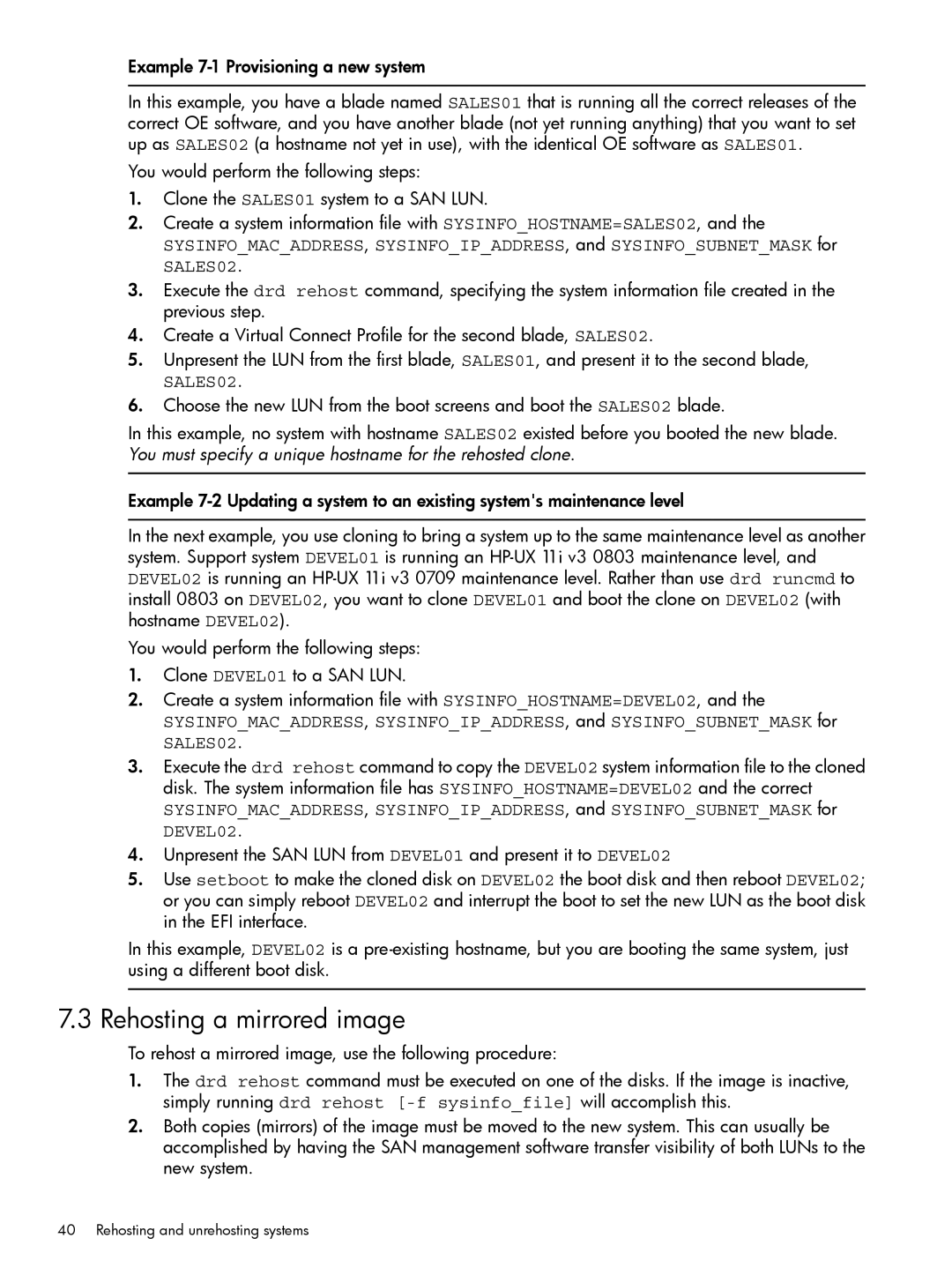
Example 7-1 Provisioning a new system
In this example, you have a blade named SALES01 that is running all the correct releases of the correct OE software, and you have another blade (not yet running anything) that you want to set up as SALES02 (a hostname not yet in use), with the identical OE software as SALES01.
You would perform the following steps:
1.Clone the SALES01 system to a SAN LUN.
2.Create a system information file with SYSINFO_HOSTNAME=SALES02, and the
SYSINFO_MAC_ADDRESS, SYSINFO_IP_ADDRESS, and SYSINFO_SUBNET_MASK for SALES02.
3.Execute the drd rehost command, specifying the system information file created in the previous step.
4.Create a Virtual Connect Profile for the second blade, SALES02.
5.Unpresent the LUN from the first blade, SALES01, and present it to the second blade,
SALES02.
6.Choose the new LUN from the boot screens and boot the SALES02 blade.
In this example, no system with hostname SALES02 existed before you booted the new blade. You must specify a unique hostname for the rehosted clone.
Example
In the next example, you use cloning to bring a system up to the same maintenance level as another system. Support system DEVEL01 is running an
You would perform the following steps:
1.Clone DEVEL01 to a SAN LUN.
2.Create a system information file with SYSINFO_HOSTNAME=DEVEL02, and the
SYSINFO_MAC_ADDRESS, SYSINFO_IP_ADDRESS, and SYSINFO_SUBNET_MASK for SALES02.
3.Execute the drd rehost command to copy the DEVEL02 system information file to the cloned disk. The system information file has SYSINFO_HOSTNAME=DEVEL02 and the correct
SYSINFO_MAC_ADDRESS, SYSINFO_IP_ADDRESS, and SYSINFO_SUBNET_MASK for DEVEL02.
4.Unpresent the SAN LUN from DEVEL01 and present it to DEVEL02
5.Use setboot to make the cloned disk on DEVEL02 the boot disk and then reboot DEVEL02; or you can simply reboot DEVEL02 and interrupt the boot to set the new LUN as the boot disk in the EFI interface.
In this example, DEVEL02 is a
7.3 Rehosting a mirrored image
To rehost a mirrored image, use the following procedure:
1.The drd rehost command must be executed on one of the disks. If the image is inactive, simply running drd rehost
2.Both copies (mirrors) of the image must be moved to the new system. This can usually be accomplished by having the SAN management software transfer visibility of both LUNs to the new system.
40 Rehosting and unrehosting systems
